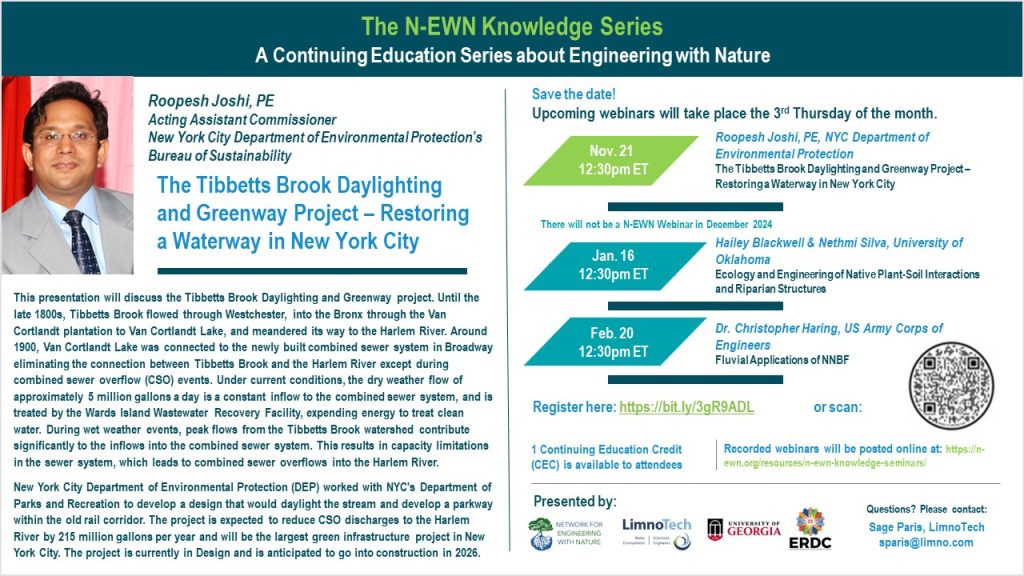This presentation will discuss the Tibbetts Brook Daylighting and Greenway project. Until the late 1800s, Tibbetts Brook flowed through Westchester, into the Bronx through the Van Cortlandt plantation to Van Cortlandt Lake, and meandered its way to the Harlem River. Around 1900, Van Cortlandt Lake was connected to the newly built combined sewer system in Broadway eliminating the connection between Tibbetts Brook and the Harlem River except during combined sewer overflow (CSO) events. Under current conditions, the dry weather flow of approximately 5 million gallons a day is a constant inflow to the combined sewer system, and is treated by the Wards Island Wastewater Recovery Facility, expending energy to treat clean water. During wet weather events, peak flows from the Tibbetts Brook watershed contribute significantly to the inflows into the combined sewer system. This results in capacity limitations in the sewer system, which leads to combined sewer overflows into the Harlem River.
New York City Department of Environmental Protection (DEP) worked with NYC’s Department of Parks and Recreation to develop a design that would daylight the stream and develop a parkway within the old rail corridor. The project is expected to reduce CSO discharges to the Harlem River by 215 million gallons per year and will be the largest green infrastructure project in New York City. The project is currently in Design and is anticipated to go into construction in 2026.

The Network for Engineering With Nature® (EWN) invites you to the N-EWN Knowledge Series: A Continuing Education Series about Engineering with Nature—The Tibbetts Brook Daylighting and Greenway Project: Restoring a Waterway in NYC presented by Roopesh Joshi, PE, Acting Assistant Commissioner, Office of Green Infrastructure and Cloudburst Design and Construction, New York City Department of Environmental Protection. This 1-hour Zoom webinar took place November 21, 2024 at 12:30pm ET.
For previously recorded seminars, please visit the N-EWN Seminars page.



